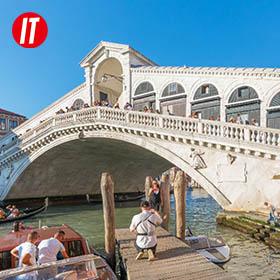The Seine In Paris
River of History and Inspirations
The Seine River flows through northern France and passes through the heart of Paris, linking historic landmarks such as the Île de la Cité, Notre Dame, the Louvre and the Eiffel Tower. The banks of the Seine in Paris became a World Heritage Site in 1991.
The River Seine, which flows through northern France and passes through the heart of Paris, links many of the city’s historical landmarks and is known as The River of Life of Paris. Paris originated on a small, ship-shaped islet in the Seine, Île de la Cité (Cite Island), which was once home to a medieval royal palace, and where Notre-Dame de Paris, the Conciergerie and the Sainte-Chapelle are located.
The Seine became a World Heritage Site in 1991. It’s true what they say: You don’t really know Paris until you’ve walked along the banks of the Seine. Avoiding the crowds in the shopping streets and tourist attractions, you can meet all kinds of people along the banks of the Seine, which was even more charming with Riverside Vintage Bookstalls.
The Seine is crossed by nearly 40 bridges of stone, iron and wooden planks, which are true records of the city’s history while providing easy access for pedestrians and vehicles. The Alexander III Bridge (Pont Alexandre III), which connects the L’hôtel des Invalides and the Grand Palais, has been named the “most beautiful bridge in Paris” for its magnificent decorations and sculptures.
Left Bank of the Seine
The Seine in the city of Paris is about 13 kilometers long, and the curved waterway divides the city in two. The south side of the river is known as the left bank and the north side is known as the right bank, based on the direction of the river.
The left bank of the Seine is famous for its artistic and cultural atmosphere, with its schools, cafes and bookshops. The Eiffel Tower, Musée d'Orsay, the L’hôtel des Invalides and the Panthéon are all located on the left bank of the Seine.

Eiffel Tower
Centennial of the French Revolution
The Eiffel Tower in Paris was built in 1889, and at 324 meters high, it held the record for the world's tallest building for more than 40 years. The Eiffel Tower is the symbol of Paris and can be admired from different angles from the Champ de Mars, the Jardins du Trocadéro and the Palais de Chaillot.

Orsay Museum
Modern Western Art Masters
The Musée d'Orsay is located on the south bank of the Seine in Paris, across the river from the Louvre. The collection of the Musée d'Orsay, created between 1848 and 1914, includes masterpieces by Impressionists such as Manet, Monet and Renoir, and sculptors such as Rodin and Rude.

Les Invalides
Monument of Military History of France
Located on the left bank of the Seine, Les Invalides de Paris was built by Louis XIV as a sanatorium for disabled French veterans, and in the 19th century the dome of Les Invalides was converted into the Tome of Napoleon I. At present, the Army Museum of France is also located here, with a collection of 500,000 artifacts.

Pantheon In Paris
Resting Place for Great People of France
Built in the 18th century, the Panthéon in Paris has an 83-meter-high dome and a facade modeled after the Pantheon in Rome. The Panthéon is the burial place of the great men of France, such as Voltaire, Rousseau, Victor Hugo, and the Curies, who are buried in the underground chambers of the Panthéon.
Right Bank of the Seine
The right bank of the Seine is more Luxury and Sophisticated than the cultural left bank. The Champs-Élysées and the Boulevard Haussmann are home to luxury brand stores from all over the world. The historic axis of the right bank, made up of the Arc de Triomphe, the Champs-Élysées, and the Louvre Museum, is the most popular tourist area in Paris.

Louvre Museum
9,000 Years of Human History
The Louvre Museum is the most visited museum in the world, with its famous glass pyramid in the center of the square. The Louvre's three wings, Richelieu, Denon and Sully, contain artifacts from Egypt, Greece, Rome and Near East, as well as paintings and decorative arts.

Arc de Triomphe
Emblem of Paris City
The Arc de Triomphe is located in the center of the Place Charles de Gaulle, the starting point of the western end of the Champs-Elysees, and was built in 1806 by order of Napoleon I. The Arc de Triomphe is the most important building in Paris. The facade has four sculpted groups and the interior has exhibition areas. The viewing platform at the top of the gate provides a panoramic view of Paris city.

Avenue des Champs-Elysees
A World Famous Commercial Avenue
The Champs-Elysees, the world's most famous commercial street, stretches approximately 2 km from the Arc de Triomphe in the west to Place de la Concorde in the east. Lined with landmarks, luxury stores, green parks and street art, the Champs-Elysees is an unforgettable boulevard.
Attractions around the Seine in Paris
- Eiffel Tower
- Louvre Museum
- Orsay Museum
- Tuileries Garden
- Avenue des Champs-Elysees
- Pont Alexandre III
- Les Invalides
Tags:
- #Bridge
- #River
- #Seine
- #Water
- #World Heritage
Related
Munich St. Peter's Church360
The Emblematic Old PeterDam Square360
Old Town Historic Commercial CenterPantheon360
2,000 Year Old Architectural MarvelMount Moiwa360
New Three Night Scenes in JapanYu Garden360
A Downtown EscapePoh San Teng Temple360
Historic Chinese Burial MoundsWiener Musikverein360
The Celebrated New Year's ConcertThe Home Of A Diplomat360
Moved From ShibuyaPiazza Venezia360
Central Urban Hub of RomeChinatown Singapore360
The Shopping Street of Niu Che ShuiCentre Pompidou360
Treasures of Modern ArtNational Mosque Of Malaysia360
Largest Mosque in ASEAN




























No comments yet, post the first one!